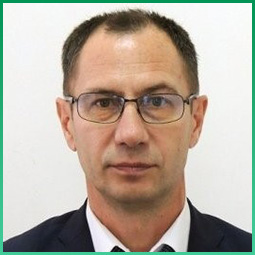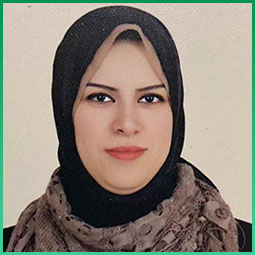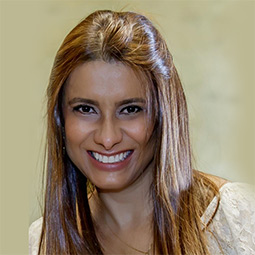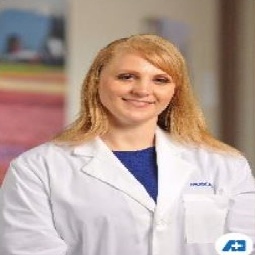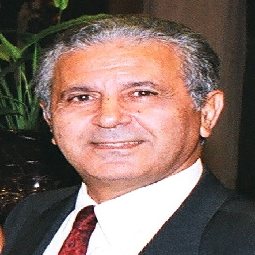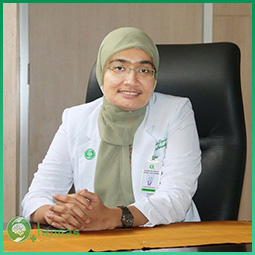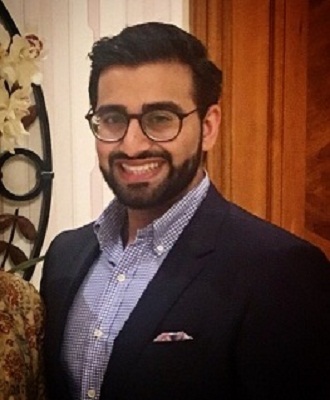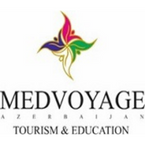Sessions and Tracks
Track 1: Pediatric Surgery
Pediatric surgery arose in the middle of the 1879 century as the surgical care of birth blights needed new ways and styles, and came more generally grounded at children's hospitals. One of the spots of this invention was Children's Sanatorium of Philadelphia. Beginning in the 1940s under the surgical leadership of. Everett Koop, WSSPOC-2023 newer ways for endotracheal anesthesia of babies allowed surgical form of preliminarily untreatable birth blights. By the late 1970s, the child death rate from several major natural contortion runs had been reduced to near zero.
Track 2: Plastic Surgery
The Plastic/Cosmetic Surgery department has a platoon of educated technicians and surgeons, with the proverbial stylish in the rearmost technology to come up with effective yet minimally invasive ornamental reconstruction styles. WSSPOC-2023 The benefits to the case are threefold they're spared the trauma of going under the cutter several times; the threat of infection due to exposed bones and implants is minimized, and this, in turn, improves the vaticinators.
Track 3: Abdominal and Vascular Surgery
The case’s previous endovascular aortic aneurysm stent graft form in the infra- renal portion of the abdominal aorta made the current aneurysm form mainly more grueling. Since she's a Jehovah’s Witness and doesn't accept blood transfusions, it was decided that an open surgical approach wasn't an option due to the high threat of bleeding. A minimally invasive, endovascular form was chosen as the ideal treatment system since the anticipated blood loss is dropped dramatically compared to traditional open aortic surgery. The surgery was performed by one of our most educated vascular surgeons, Dr. James Black, and took place over the course of 7 hours. The anesthesia care was handed byDr. Steven Frank, the Director of the Center for Bloodless Medicine and Surgery at Johns Hopkins. The spinal drain performed nicely and the case’s blood pressure was maintained above the threshold necessary to insure blood inflow to the feathers and the spinal cord.
Track 4: Anesthesia in ENT Surgery
ENT procedures are the most common surgeries in children- an optimal anaesthetic operation provides an uncomplicated, safe perioperative process with as little discomfort for the child as possible. Children at threat must formerly be linked preoperatively the combination of ENT surgery, airway vulnerability and age below 3 times can increase the rate of perioperative respiratory adverse events. Postoperatively, it's important to help complications similar as pain and PONV by devoted forestalment and treatment strategies, as well as to fete and treat respiratory or circulatory complications competent. Interdisciplinary guidelines and agreements as well as the overall capability of the platoon have the eventuality to ameliorate patient safety and outgrowth in children.
Track 5: Robotic and Laparoscopic Surgery
A traditional open surgery approach, your Med Star surgeon uses a large gash to perform the surgery. In laparoscopic surgery, your surgeon makes several small lacerations into which they fit small surgical tools and a camera. The camera allows your surgeon to see inside your body to perform the surgery. Robotic surgery is analogous to laparoscopic surgery in that they both use small lacerations, a camera, and surgical instruments. still, rather of holding and manipulating the surgical instruments during robotic surgery, your Med Star surgeon will sit at a computer press and use controls to manipulate the robot. The press allows your surgeon to view high- description, magnified 3D images with increased delicacy and vision inside your body. Compared to traditional surgery, robotic surgery provides your surgeon with a lesser range of stir and perfection, which may lead to lower bleeding and post-operative pain.
Track 6: Orthopaedics Surgery
Orthopaedics (also called orthopaedic surgery) is the medical specialty that focuses on injuries and conditions of your body's musculoskeletal system. This complex system, which includes your bones, joints, ligaments, tendons, muscles, and jitters, allows you to move, work, and be active. Once devoted to the care of children with chine and branch scars, orthopaedists now watch for cases of all periods, from babe with clubfeet to youthful athletes taking arthroscopic surgery to aged people with arthritis. And anybody can break a bone at any age.
Track 7: Ophthalmic Surgery
Eye surgery, also known as ophthalmic or optical surgery, is surgery performed on the eye or its adnexa, by an ophthalmologist or occasionally, an optometrist. Eye surgery is synonymous with ophthalmology. The eye is a veritably fragile organ, and requires extreme care before, during, and after a surgical procedure to minimize or help farther damage. An expert eye surgeon is responsible for opting the applicable surgical procedure for the case, and for taking the necessary safety preventives. Citations of eye surgery can be set up in several ancient textbooks dating back as beforehand as 1800 BC, with cataract treatment starting in the fifth century BC moment it continues to be a extensively rehearsed type of surgery, with colourful ways having been developed for treating eye problems.
Track 8: Oral and Maxillofacial Surgery
The daily journal offers comprehensive content of new ways, important developments and innovative ideas in oral and maxillofacial surgery and interdisciplinary aspects of cranial, and facial & oral conditions and their operation. The journal publishes papers of the loftiest scientific merit and widest possible compass on work in oral and maxillofacial surgery as well as supporting specialties. Exercise- acquainted papers help ameliorate the styles used in oral and maxillofacial surgery.
Track 9: Endocrine surgery
Endocrine surgeries treat diseases that affect glands in your endocrine system. The surgeries substantially concentrate on conditions that affect your thyroid, parathyroid and adrenal glands. Glands are organs that release hormones into your bloodstream. These hormones shoot dispatches to apkins that tell them what to do to keep your body healthy. You may need endocrine surgery if a gland stops working rightly. The gland may shoot out too important hormone or not enough.
Track 10: Trauma surgery and critical care
Trauma cares for all trauma cases admitted to Yale- New Haven Hospital, which is the indigenous position 1 Trauma Center for Southern Connecticut and the only trauma Center in the state to be vindicated by the American College of Surgeons for both adult and pediatric cases. Surgical Critical Care manages all critically ill surgical cases through its critical care services (the Surgical Intensive Care Unit and the Intermediate Care Unit). Exigency General Surgery treats cases with surgical extremities both in Emergency Department and in the sanatorium.
Track 11: Cancer Treatment and Tumor Ablation Surgery
Excrescence ablation is a minimally invasive procedure used to treat liver, lung, order, bone and chine excrescences. During a microwave oven, alcohol, radio- frequency or cryo- ablation, an imaging croakeruses a CT scanner — a high- tech interpretation of precisely detect a excrescence and also guides a technical hairline inquiry into it. Broilers, alcohol, radio swells or a freezing agent are transferred through this inquiry, heating, indurating or in another fashion killing the excrescence.
Track 12: Cardiothoracic Surgery
Cardiothoracic surgery treats conditions in the heart, lungs, and casket. Our surgeons perform a variety of cardiothoracic surgeries, from minimally invasive to heart transplants. A many common cardiothoracic surgeries and procedures include Angioplasty. Percutaneous Trans luminal coronary angioplasty (PTCA or balloon angioplasty) helps restore a healthy blood inflow to the heart by continuing highways that are narrowed by adipose shrine. Stent placement. A stent is a small essence coil or tube that's placed in a narrowed roadway to hold it open. To place the stent, your healthcare provider first performs angioplasty or atherectomy to compress or cut away shrine build-up in the roadway. Ablation is a fashion generally used to treat abnormal heart rates and measures. It involves ablating (destroying) a veritably small, targeted area of the heart muscle.
Track 13: Craniofacial Surgery
Craniofacial surgery is a surgical subspecialty that deals with natural and acquired scars of the head, cranium, face, neck, jaws and associated structures. Although craniofacial treatment frequently involves manipulation of bone, craniofacial surgery isn't towel-specific; craniofacial surgeons deal with bone, skin, whim-whams, muscle, teeth, and other affiliated deconstruction. Blights generally treated by craniofacial surgeons include craniosynostosis, rare craniofacial checks, acute and habitual sequelae of facial fractures, split lip and palate, micrognathia, Teacher Collins Syndrome, Apert's Syndrome, Corazon’s Syndrome, Craniofacial microsomia, microbial and other natural observance anomalies, and numerousothers.Training in craniofacial surgery requires completion of a Craniofacial surgery fellowship. Similar fellowships are available to individualities that have completed occupancy in oral and maxillofacial surgery, plastic and reconstructive surgery, or ENT surgery. Those who have completed occupancy in oral and maxillofacial surgery may be either single degree or binary- degree surgeons with no differences. There's no specific board for craniofacial surgery. In the US, split and craniofacial centres are set up in numerous major academic centres.
Track 14: Thoracic Surgery
Thoracic surgeons-- who are frequently grouped with cardiac, or heart, specialists for cardiothoracic surgery-- operate on the heart, lungs, oesophagus, and major blood vessels inside the casket, as well as the bony structures and apkins that form and support the casket depression. Heart complaint is the leading cause of death in the United States, killing one person every 36 seconds. Experts estimate that someone has a heart attack every 40 seconds. Lung cancer is the third most common cancer and the leading cause of cancer death for men and women. These figures punctuate the significance of cardiac care and thoracic surgery.
Track 15: Surgical Oncology
Surgical oncology is the field of cancer care that focuses on surgery to diagnose, carry and treat cancer, and to manage some cancer- related symptoms. Surgical oncologists at Cancer Treatment Centres of America (CTCA) work on a multidisciplinary platoon of corkers and clinicians to combine surgery with other curatives and procedures needed by the case’s comprehensive plan.Our surgeons and surgical oncology brigades at CTCA ® have times of experience in performing surgical procedures for numerous types of cancer, including advanced and complex excrescences. Our patient care also includes the use of palliative surgeries to control pain, increase your comfort position and ameliorate your quality of life.
Market Analysis
Global Postoperative operation request, By suggestion( Airway inhibition, Hypoxia, Haemorrhage, Hypotension, Hypertension, Pain, Shivering, Hypothermia, Vomiting, Aspiration, Residual Somnolence), Product Type( Opioids, Fentanyl, Morphine, Meperidine,Non-SteroidalAnti-Inflammatory medicines, Paracetamol, Ibuprofen, Ketorolac Tromethamine, Celecoxib, Etoricoxib, Rofecoxib, Glucocorticoids, Original Anaesthetics, Antidepressants, Others), operation( Cancer Pain, Arthritic Pain, Neuropathic Pain, Musculoskeletal Pain, Migraine, Fibromyalgia, Other), Distribution Channel( Hospital Pharmacies, Retail Apothecaries and Drug Store-Commerce) – Assiduity Trends and Forecast to 2029
The most frequent reason for admitting particular cases to an ICU or step-down unit is the demand for protrusive hemodynamic monitoring and observation. The inflexibility of the severe complaint and demand for invasive positive pressure breathing are the abecedarian differences between these two surroundings in the maturity of institutions.

Data Bridge Market Research analyses that the postoperative operation request which was USD35.5 billion in 2021, would rocket up to USD57.27 billion by 2029, and is anticipated to suffer a CAGR of6.16 during the cast period 2022 to 2029. In addition to the request perceptivity similar as request value, growth rate, request parts, geographical content, request players, and request script, the request report curated by the Data Bridge Market Research platoon also includes in- depth expert analysis, patient epidemiology, channel analysis, pricing analysis, and nonsupervisory frame.
